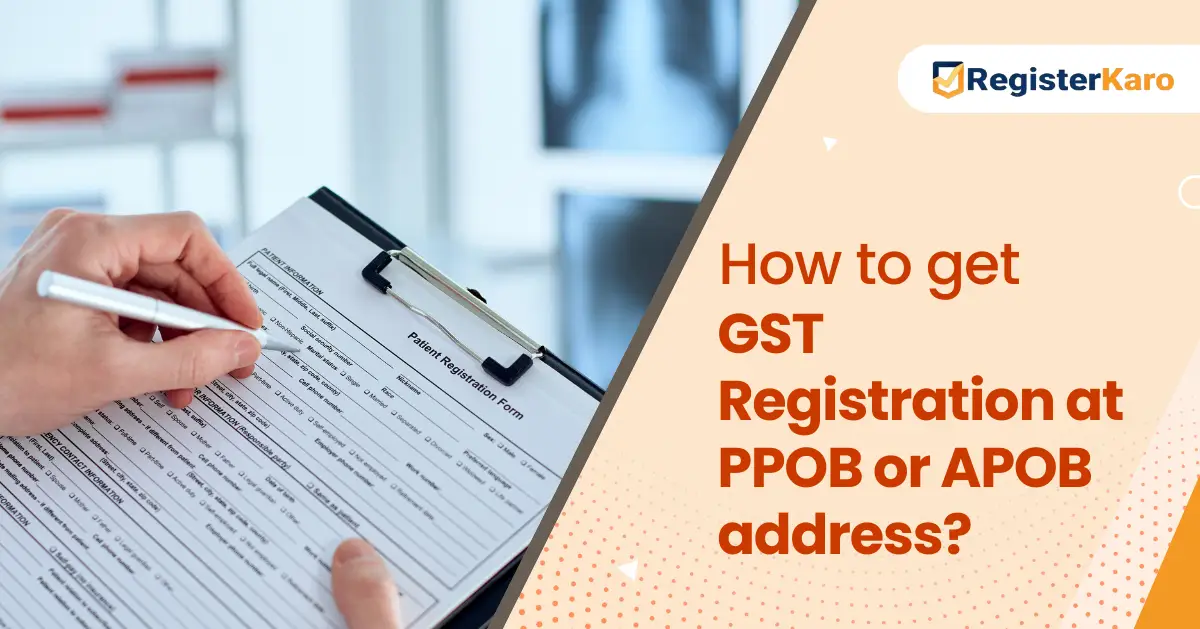
Online GST Registration for Service Tax Holders: A Step-by-Step Guide
The introduction of the Goods and Services Tax in India in 2017 marked a monumental shift in the country’s indirect taxation system. It brought about a unified tax structure that replaced a host of previous taxes, including Service Tax, VAT, Excise Duty, and others. This transition to GST would, in the past, seem very burdensome for businesses registered earlier under Service Tax, but now with the implementation of online GST registration for Service Tax holders, the process has been much streamlined.
In this blog, we’ll walk you through the benefits, the process, and the requirements for online GST registration for Service Tax holders, highlighting steps that are involved, the critical documents required, and what one is to expect from the transition process. Whether you’re a sole proprietor, partnership, company, or any other type of business, this will help you understand how you can migrate hassle-free to the GST regime.
Why should service tax holders register for GST?
Before discussing the registration process, let’s understand why Service Tax holders must migrate to GST. The Service Tax regime, which was prevailing prior to July 1, 2017, was subsumed by the GST law. All entities that were registered under Service Tax need to obtain GST registration for continued compliance with the law. Here are a few reasons why this transition is necessary and beneficial:
- Legal Requirement: All businesses rendering taxable services with turnover more than the prescribed threshold limits must mandatorily get registered under GST. If you were registered under Service Tax, you are legally bound to migrate to GST.
- Simplified Tax Structure: GST subsumes several indirect taxes like Service Tax, VAT, and Excise Duty. By migrating to GST, you will have a single, uniform tax structure.
- Input Tax Credit : Under the GST regime, businesses can claim input tax credit for taxes paid on their purchases of goods and services. This was not available under the Service Tax regime. For Service Tax holders, registering for GST opens up opportunities to claim ITC, thus lowering overall tax liability
- No More Multi-State Registrations: In case of GST, a single registration under it enables the business to function pan-states, thus eliminating the multiple registrations done for state-specific taxes under the old regime of Service Tax.
- Competitive Edge: GST registration enhances your business credibility. It indicates that your business is transparent and tax-compliant. Hence, it becomes easier to make people believe in your business among customers, suppliers, and prospective investors.
Eligibility Criteria for GST Registration for Service Tax Holders
If you are a Service Tax holder, then you would most likely fall in the following categories for GST registration:
- Aggregate Turnover: If your aggregate turnover in the preceding financial year exceeds ₹20 lakhs (₹10 lakhs for special category states like North-Eastern states), then you need to register for GST.
- Service Tax Registration: If you were already registered under Service Tax before GST, you can migrate to GST through a migration process without any additional documents.
- Voluntary Registration: Even if your turnover does not exceed the limit, you may choose to voluntarily register under GST. This could be beneficial if you wish to claim input tax credit or if you have business interests that span across state borders.
Steps for Online GST Registration for Service Tax Holders
The transition from Service Tax to GST isn’t much of a complicated task. All this is possible with an online facility. The GST Portal also offers business houses the opportunity to register and transition into a few steps. Let’s work our way through the procedure.
The first step is to visit the official GST Portal: www.gst.gov.in. This is the central hub where you can perform all GST-related tasks, including registration, filing returns, and payments. Once you are on the GST Portal homepage, go to the ‘Services’ section at the top menu.
From the dropdown list, select ‘Registration’, then click on ‘New Registration’ to start with the registration process.Next step is to select the type of tax payers. You would choose ‘Migrating from Service Tax’ as you are migrating from Service Tax.
This is an important step as it will help you to connect your existing Service Tax registration to the new GST registration.
After that it is needed to enter some basic details, such as, Legal Name of the Business, Trade Name-if applicable, Type of Business (Sole Proprietorship, Partnership, Company, etc.), PAN (Permanent Account Number) of the Business, Email Address and Mobile Number:
These would be used to contact and authenticate. Once all details are provided, click on proceed
Furthermore, The GST Portal will send an OTP for the given email address and mobile number once all the details have been entered. Enter the OTP for authenticating all the details as mentioned above.
As a Service Tax holder, you will require providing your Service Tax Registration Number, date of registration, and other relevant details. In return, the system will display all your Service Tax registration information that will then be mapped to GST registration.
Subsequently, enter all the detailed business information such as, business Address-Enter the registered address of the business, Additional Place of Business, Details of Directors/Partners: This information has to be given for companies as well as partnerships.
Along with that it is needed to disclose the Nature of Business, choose the class of business that your company performs, be it a service-providing unit, a manufacturing business or just a trading one. Lastly, bank account details: Input your business’s bank accounts in order, with the corresponding IFSC and Account Number.
The documents required for registration submission must include such as the PAN Card of the business (or the proprietor, in case of a sole proprietorship), Aadhar Card of the authorized signatory, registration Proof of Business (for companies/partnerships), address Proof of the business premises (rent agreement, utility bill, etc), Bank Account Proof (cancelled cheque, bank statement, etc).
It is needed to ensure that all the documents are clear, valid, and in the prescribed formats. If there are any discrepancies or lack of documents, it might delay the process.
After completing all sections and uploading all necessary documents, you can submit your application for GST registration. If everything is correct, then your application will be processed, and you will receive a GST Application Reference Number.
GSTIN Allotment
Once the GST application is processed, and the verification is done, you will receive your GSTIN. This will be sent to the registered email ID, and you can access your GSTIN from the GST Portal. You can now use this unique number to conduct business operations under the GST regime.
Along with that there are some important Points
- GST Return Filing: After registration, you will have to file GST returns on a regular basis, either monthly, quarterly or annually depending upon your turnover. These returns contain information about the sales, purchases, and tax payable.
- Migration of Existing Service Tax Credit: If you were registered under Service Tax, you are eligible to claim Input Tax Credit for taxes paid under the Service Tax regime. This requires proper documentation and filing of returns.
- Audit and Compliance: After GST registration, maintain proper records of all transactions and comply with GST regulations. Businesses are subject to periodic audits, and non-compliance can lead to penalties
- Simplified Process for Existing Registrants: Service Tax holders can migrate easily to GST without the need to start from scratch. The GST Portal automatically pulls in most details from the existing Service Tax registration.
CONCLUSION
The process of online GST registration for Service Tax holders is designed to be simple, quick, and efficient. Migrating to GST is not only a legal requirement but also brings several benefits, such as the ability to claim Input Tax Credit, a unified tax structure, and enhanced credibility in the market.
The Service Tax to GST transition for Indian businesses, particularly service industry companies, is no longer an intimidating task. The government has made the whole process very easy and accessible to all kinds of businesses by using the ONLINE portal.
It is ensured that one’s business is registered under GST and, consequently, with the modernized tax regime of the country, bringing him more opportunities for growth, expansion, and sustainability in the competitive market.




